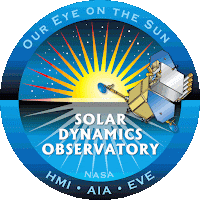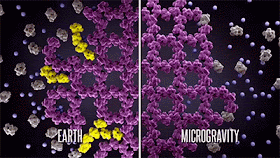ISS - International Space Station patch.
Oct. 30, 2015
International Space Station 15 Years
International Space Station (ISS)
With astronauts living and working aboard the International Space Station, NASA is learning a great deal about creating and testing critical systems, maintaining efficient communications and protecting the human body during a deep space mission. While these are critical to our journey to Mars, it is important to also note all the ways in which research conducted and technology tested aboard the orbiting laboratory help us here on Earth.
Here are 15 ways the space station is benefiting life on Earth:
Commercializing low-Earth orbit

An exciting new commercial pathway is revolutionizing and opening access to space, fostering America’s new space economy in low-Earth orbit. For the first time, the market is expressing what research can and should be done aboard the microgravity laboratory without direct government funding. A significant portion of the commercial research taking place aboard the station is made possible by NanoRacks hardware. The company has invested privately and raised capital to provide laboratory facilities for small payloads, including CubeSats deployed from the space station, that make research faster and more affordable. NASA’s move to purchase commercial cargo resupply and crew transportation to the space station enables U.S. businesses to develop a competitive capability they also can sell as a service to others while freeing NASA resources for deep space exploration. Private sector participation provides a new model for moving forward in partnership with the government.
Supporting water purification efforts worldwide
Whether in the confines of the International Space Station or a tiny hut village in sub-Saharan Africa, drinkable water is vital for human survival. Unfortunately, many people around the world lack access to clean water. Using technology developed for the space station, at-risk areas can gain access to advanced water filtration and purification systems, making a life-saving difference in these communities. Joint collaborations between aid organizations and NASA technology show just how effectively space research can adapt to contribute answers to global problems. The commercialization of this station-related technology has provided aid and disaster relief for communities worldwide. The Water Security Corporation, in collaboration with other organizations, has deployed systems using NASA water-processing technology around the world.
Growing high-quality protein crystals
There are more than 100,000 proteins in the human body and as many as 10 billion in nature. Every structure is different, and each protein holds important information related to our health and to the global environment. The perfect environment in which to study these structures is space. Microgravity allows for optimal growth of the unique and complicated crystal structures of proteins leading to the development of medical treatments. An example of a protein that was successfully crystallized in space is hematopoietic prostaglandin D synthase (H-PGDS), which may hold the key to developing useful drugs for treating muscular dystrophy. This particular experiment is an example of how understanding a protein’s structure can lead to better drug designs. Further research is ongoing.
Bringing space station ultrasound to the ends of the Earth

Fast, efficient and readily available medical attention is key to survival in a health emergency. For those without medical facilities within easy reach, it can mean the difference between life and death. For astronauts in orbit about 250 miles above Earth aboard the International Space Station, that problem was addressed through the Advanced Diagnostic Ultrasound in Microgravity (ADUM) investigation. In partnership with the World Interactive Network Focused on Critical Ultrasound (WINFO-CUS), ADUM principal investigator Scott Dulchavsky, M.D., is taking techniques originally developed for space station astronauts and adapting them for use in Earth’s farthest corners by developing protocols for performing complex procedures rapidly with remote expert guidance and training. Medical care has become more accessible in remote regions by use of small ultrasound units, tele-medicine, and remote guidance techniques, just like those used for people living aboard the space station.
Improving eye surgery with space hardware
Laser surgery to correct eyesight is a common practice, and technology developed for use in space is now commonly used on Earth to track a patient’s eye and precisely direct the laser scalpel. The Eye Tracking Device experiment gave researchers insight into how humans’ frames of reference, balance and the overall control of eye movement are affected by weightlessness. In parallel with its use on the space station, the engineers realized the device had potential for applications on Earth. Tracking the eye’s position without interfering with the surgeon’s work is essential in laser surgery. The space technology proved ideal, and the Eye Tracking Device equipment is now being used in a large proportion of corrective laser surgeries throughout the world.
Making inoperable tumors operable with a robotic arm
The delicate touch that successfully removed an egg-shaped tumor from Paige Nickason’s brain got a helping hand from a world-renowned arm—a robotic arm, that is. The technology that went into developing neuroArm, the world’s first robot capable of performing surgery inside magnetic resonance machines, was born of the Canadarm (developed in collaboration with engineers at MacDonald, Dettwiler, and Associates, Ltd. [MDA] for the U.S. Space Shuttle Program) as well as Canadarm2 and Dextre, the Canadian Space Agency’s family of space robots performing the heavy lifting and maintenance aboard the International Space Station. Since Nickason’s surgery in 2008, neuroArm has been used in initial clinical experience with 35 patients who were otherwise inoperable.
Preventing bone loss through diet and exercise
In the early days of the space station, astronauts were losing about one-and-a-half percent of their total bone mass density per month. Researchers discovered an opportunity to identify the mechanisms that control bones at a cellular level. These scientists discovered that high-intensity resistive exercise, dietary supplementation for vitamin D and specific caloric intake can remedy loss of bone mass in space. The research also is applicable to vulnerable populations on Earth, like older adults, and is important for continuous crew member residency aboard the space station and for deep space exploration to an asteroid placed in lunar orbit and on the journey to Mars.
Understanding the mechanisms of osteoporosis
While most people will never experience life in space, the benefits of studying bone and muscle loss aboard the station has the potential to touch lives here on the ground. Model organisms are non-human species with characteristics that allow them easily to be reproduced and studied in a laboratory. Scientists conducted a study of mice in orbit to understand mechanisms of osteoporosis. This research led to availability of a pharmaceutical on Earth called Prolia® to treat people with osteoporosis, a direct benefit of pharmaceutical companies using the spaceflight opportunity available via the national lab to improve health on Earth.
Developing improved vaccines
Ground research indicated that certain bacteria, in particular Salmonella, might become more pathogenic (more able to cause disease) during spaceflight. Salmonella infections result in thousands of hospitalizations and hundreds of deaths annually in the United States. While studying them in space, scientists found a pathway for bacterial pathogens to become virulent. Researchers identified the genetic pathway activating in Salmonella bacteria, allowing the increased likelihood to spread in microgravity. This research on the space station led to new studies of microbial vaccine development.
Providing students opportunities to conduct their own science in space
From the YouTube Space Lab competition, the Student Spaceflight Experiments Program, and SPHERES Zero Robotics, space station educational activities inspire more than 43 million students across the globe. These tyFrom the YouTube Space Lab competition, the Student Spaceflight Experiments Program, and SPHERES Zero Robotics, space station educational activities inspire more than 43 million students across the globe. These types of inquiry-based projects allow students to be involved in human space exploration with the goal of stimulating their studies of science, technology, engineering and mathematics. It is understood that when students test a hypothesis on their own or compare work in a lab to what’s going on aboard the space station, they are more motivated towards math and science.
Breast cancer detection and treatment technology
A surgical instrument inspired by the Canadian Space Agency’s heavy-lifting and maneuvering robotic arms on the space station is in clinical trials for use in patients with breast cancer. The Image-Guided Autonomous Robot (IGAR) works inside an MRI machine to help accurately identify the size and location of a tumor. Using IGAR, surgeons also will be able to perform highly dexterous, precise movements during biopsies.
Monitoring water quality from space
Though it completed its mission in 2015, the Hyperspectral Imager for the Coastal Ocean (HICO) was an imaging sensor that helped detect water quality parameters such as water clarity, phytoplankton concentrations, light absorption and the distribution of cyanobacteria. HICO was first designed and built by the U.S. Naval Research Laboratory for the Office of Naval Research to assess water quality in the coastal ocean. Researchers at the U.S. Environmental Protection Agency (EPA) took the data from HICO and developed a smartphone application to help determine hazardous concentrations of contaminants in water. With the space station’s regular addition of new instruments to provide a continuous platform for Earth observation, researchers will continue to build proactive environmental protection applications that benefit all life on Earth.
Monitoring natural disasters from space
An imaging system aboard the station, ISS SERVIR Environmental Research and Visualization System (ISERV), captured photographs of Earth from space for use in developing countries affected by natural disasters. A broader joint endeavor by NASA and the U.S. Agency for International Development, known as SERVIR, works with developing nations around the world to use satellites for environmental decision-making. Images from orbit can help with rapid response efforts to floods, fires, volcanic eruptions, deforestation, harmful algal blooms and other types of natural events. Since the station passes over more than 90 percent of the Earth’s populated areas every 24 hours, the ISERV system was available to provide imagery to developing nations quickly, collecting up to 1,000 images per day. Though ISERV successfully completed its mission, the space station continues to prove to be a valuable platform for Earth observation during times of disaster
Describing the behavior of fluids to improve medical devices
Capillary Flow Experiments (CFE) aboard the space station study the movement of a liquid along surfaces, similar to the way fluid wicks along a paper towel. These investigations produce space-based models that describe fluid behavior in microgravity, which has led to a new medical testing device on Earth. This new device could improve diagnosis of HIV/AIDS in remote areas, thanks in part to knowledge gained from the experiments.
Improving indoor air quality
Solutions for growing crops in space now translates to solutions for mold prevention in wine cellars, homes and medical facilities, as well as other industries around the world. NASA is studying crop growth aboard the space station to develop the capability for astronauts to grow their own food as part of the agency’s journey to Mars. Scientists working on this investigation noticed that a buildup of a naturally-occurring plant hormone called ethylene was destroying plants within the confined plant growth chambers. Researchers developed and successfully tested an ethylene removal system in space, called Advanced Astroculture (ADVASC). It helped to keep the plants alive by removing viruses, bacteria and mold from the plant growth chamber. Scientists adapted the ADVASC system for use in air purification. Now this technology is used to prolong the shelf-life of fruits and vegetables in the grocery store, and winemakers are using it in their storage cellars.
Related links:
15 Years on Station:
http://www.nasa.gov/station15
International Space Station (ISS):
http://www.nasa.gov/mission_pages/station/main/index.html
Space Station Research and Technology:
http://www.nasa.gov/mission_pages/station/research/index.html
America’s new space economy in low-Earth orbit:
https://www.nasa.gov/feature/iss-commercial-economic-opportunities/
NASA water-processing technology:
http://www.nasa.gov/content/benefits-for-humanity-water-for-the-world/
Advanced Diagnostic Ultrasound in Microgravity (ADUM):
http://www.nasa.gov/mission_pages/station/research/benefits/ultrasound.html
Eye Tracking Device experiment:
http://www.nasa.gov/mission_pages/station/research/experiments/179.html
SPHERES Zero Robotics:
http://www.nasa.gov/mission_pages/station/research/experiments/690.html
Image-Guided Autonomous Robot (IGAR):
http://www.nasa.gov/station/research/news/igar/
Hyperspectral Imager for the Coastal Ocean (HICO):
http://www.nasa.gov/mission_pages/station/research/benefits/HREP_HICO.html
ISS SERVIR Environmental Research and Visualization System (ISERV):
http://www.nasa.gov/mission_pages/station/research/benefits/HREP_HICO.html
Capillary Flow Experiments (CFE):
http://www.nasa.gov/mission_pages/station/research/news/cap_flow/
Advanced Astroculture (ADVASC):
http://www.nasa.gov/mission_pages/station/research/news/ADVASC/
Animations, Images, Text, Credits: NASA/Kristine Rainey.
Best regards, Orbiter.ch


















































